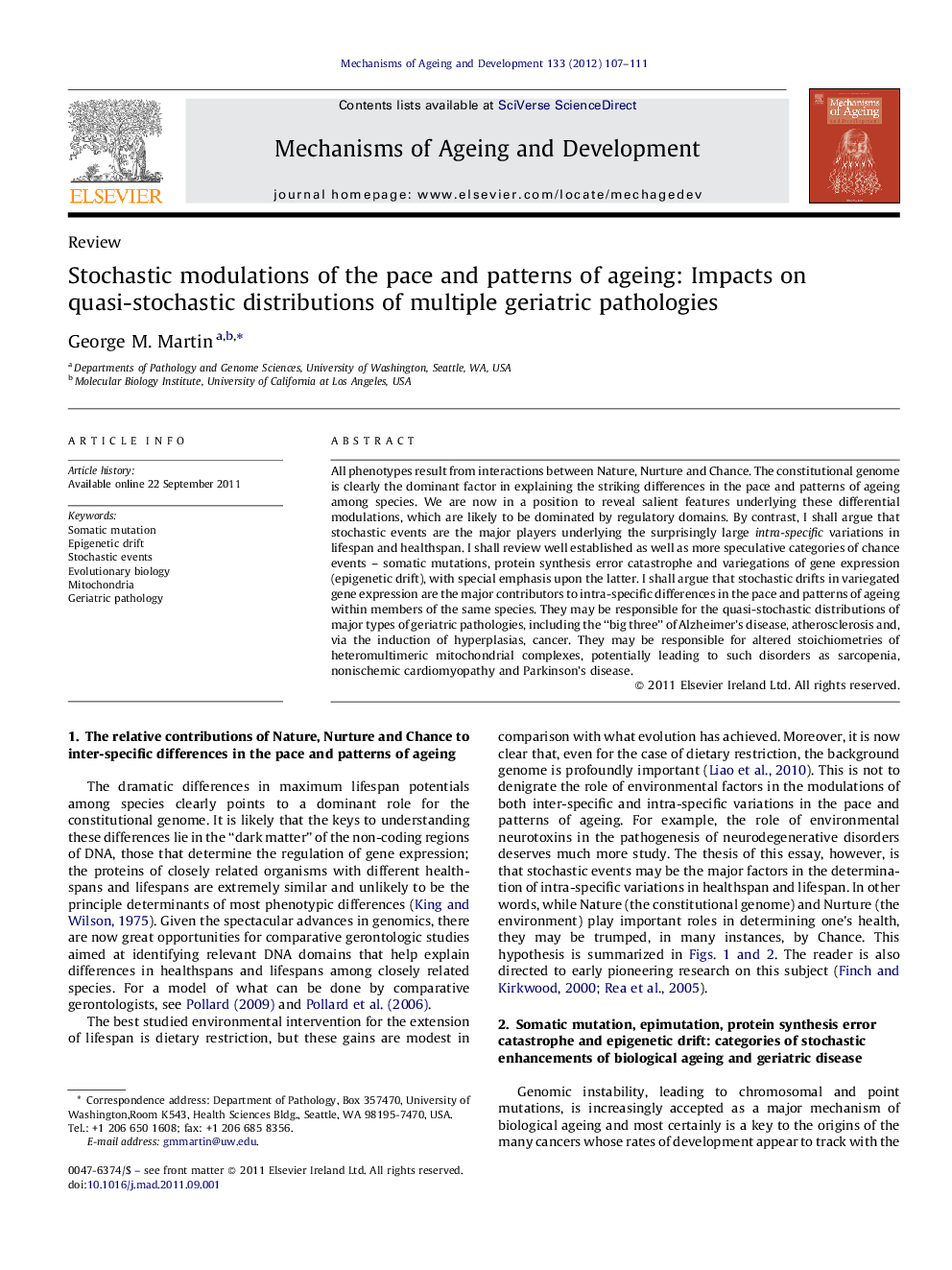| Article ID | Journal | Published Year | Pages | File Type |
|---|---|---|---|---|
| 1919254 | Mechanisms of Ageing and Development | 2012 | 5 Pages |
All phenotypes result from interactions between Nature, Nurture and Chance. The constitutional genome is clearly the dominant factor in explaining the striking differences in the pace and patterns of ageing among species. We are now in a position to reveal salient features underlying these differential modulations, which are likely to be dominated by regulatory domains. By contrast, I shall argue that stochastic events are the major players underlying the surprisingly large intra-specific variations in lifespan and healthspan. I shall review well established as well as more speculative categories of chance events – somatic mutations, protein synthesis error catastrophe and variegations of gene expression (epigenetic drift), with special emphasis upon the latter. I shall argue that stochastic drifts in variegated gene expression are the major contributors to intra-specific differences in the pace and patterns of ageing within members of the same species. They may be responsible for the quasi-stochastic distributions of major types of geriatric pathologies, including the “big three” of Alzheimer's disease, atherosclerosis and, via the induction of hyperplasias, cancer. They may be responsible for altered stoichiometries of heteromultimeric mitochondrial complexes, potentially leading to such disorders as sarcopenia, nonischemic cardiomyopathy and Parkinson's disease.
► Stochastic events are major determinants of intra-specific variations in healthspans and lifespans. ► Epigenetic drifts during ageing may be initial pathogenetic events in geriatric pathologies. ► Epigenetic drifts may alter stoichiometries of multimeric proteins, particularly in mitochondria.
